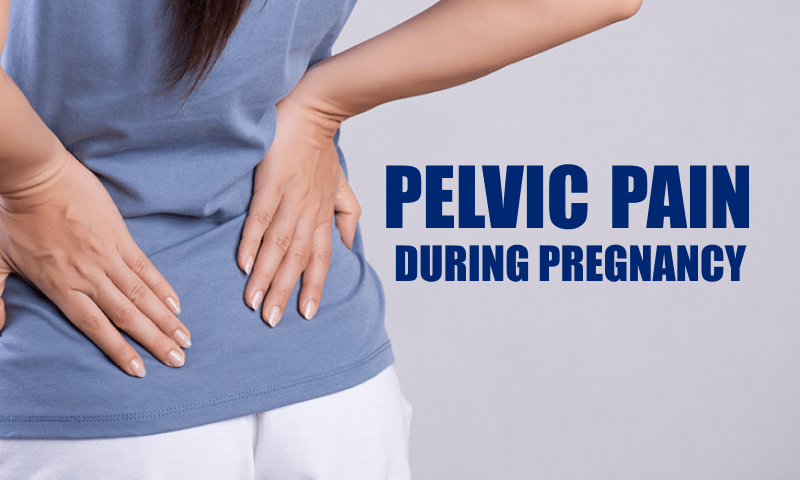Introduction
Numerous physical changes coincide with pregnancy, which is frequently praised as a lovely and transformational time. Some women experience difficulties along the way, and pelvic pain is one such condition that needs careful consideration and understanding. The purpose of this in-depth post is to help pregnant moms. And understanding the complex features of pelvic pain during pregnancy. This includes a thorough examination of the causes, symptoms, and various management options associated with pelvic pain.
Causes of Pelvic Pain during Pregnancy
Hormonal Changes:
The rise in hormones during pregnancy is because of relaxin. It is essential for preparing the body for giving birth. Although relaxin helps the ligaments to open up as needed, this increased flexibility can cause pelvic instability and discomfort.
Increased Pressure on Pelvic Organs:
When a baby grows, the uterus enlarges and presses against the structures and organs nearby. Although necessary for fetal development, this physiological shift may put strain on the pelvic region, resulting in pain and discomfort.
Symphysis Pubis Dysfunction (SPD):
Excessive relaxation of the ligaments that stabilize the pelvic joint causes SPD. This disorder, which increases pain and instability, is more common in the second and third trimesters of pregnancy.
Round Ligament Pain:
Sharp, stabbing pains get caused by circular ligaments, which get stretched and pulled and are essential for maintaining the uterus. These lower abdominal sensations are frequently felt on one or both sides, and they are worse when you move suddenly.
Types and Symptoms of Pelvic Pain during Pregnancy
Symptoms of Symphysis Pubis Dysfunction (SPD):
Pubic Discomfort: Chronic pain and discomfort in pubic region becoming frequently worse by movement is the pubic discomfort.
Mobility Challenges: Because of pelvic joint instability, walking and leg separation are difficult.
Auditory Clues: Some female SPD sufferers describe a clicking or grinding feeling in the pelvic area.
Round Ligament Pain Symptoms:
Sharp Pains: One or both sides of the lower abdomen may experience a sudden, intense, stabbing pain.
Movement-Related: Movement or positional changes, such as getting up or turning over in bed, increase pain.
Tenderness: Lower abdominal tenderness, especially when the affected area is touched.
General Pelvic Pain Symptoms:
Aching or Pressure:
Constant, fluctuating-in-intensity pelvic pain or pressure.
Discomfort with Activities:
Having trouble doing things like getting in and out of car/bed, which require spreading one’s legs.
Positional Discomfort:
Uncomfortable feelings experienced after prolonged standing, walking, or sitting.
When to Seek Medical Attention
Although pelvic discomfort is a typical pregnancy symptom, several indications call for immediate medical attention:
- Severe or Persistent Pain:
Pain that is serious or ongoing enough to cause major disruptions to day-to-day activity.
- Pain with Vaginal Bleeding:
Pelvic pain coupled with vaginal bleeding can take many different forms.
- Urinary Symptoms:
Pain during urinating or other symptoms related to the urinary system.
- Fever or chills:
A combination of pelvic pain and a fever or chills.
- Swelling and Redness:
Pelvic area swelling, redness, or warmth that may be a sign of an infection.
It is important to consult healthcare professional for a full assessment and suitable treatment if any of these symptoms appear.

Managing Pelvic Pain during Pregnancy
Pregnant women should look out for pelvic pain during pregnancy treatment options. And it will include following things:
Physiotherapy and Exercises:
Customized Exercise Plans: Physiotherapy and specific exercises meant to improve stability and strengthen the pelvic muscles.
Professional Guidance: For individualized workout recommendations, work with a licensed physiotherapist or healthcare provider.
Pelvic Floor Exercises: Utilizing these exercises to improve muscle tone and reduce pain.
Supportive Devices:
Belt and Braces: To stabilize pelvic joints and reduce ligament tension, use support belts or braces.
Proper Fitting: Ensuring that support devices are fitted correctly in order to optimize their effectiveness.
Orthopedic Consultation: Seeking advice for specialized support solutions from an orthopedic expert.
Warm Compresses:
Thermotherapy: Using warm compresses to ease pain and encourage muscular relaxation in the pelvic region.
Caution with Temperature: To prevent any negative effects, make sure warm compresses are at a moderate temperature.
Warm Baths: Use warm baths as a calming technique, making sure the water is safe to use while pregnant.
Rest and Posture:
Adequate Rest: Making sure you get enough sleep is important, especially when your pelvic pain is at its worst.
Postural awareness: Keeping your body in alignment to equally distribute your weight and lessen the strain on your pelvis.
Activity Modification: Changing routine activities, such as avoiding prolonged standing or sitting, can reduce strain on the pelvic region.
Medication:
Consultation with Healthcare Provider: Before taking any over-the-counter painkillers, get advice from a healthcare professional.
Safe Options: Finding safe, pregnancy-safe medications to ease discomfort.
Risk-Benefit Assessment: Before taking any medicine, conduct a thorough risk-benefit analysis with a medical professional.
Conclusion
In summary, pelvic pain during pregnancy is a complex issue that requires an advanced therapy strategy. Pregnant moms’ quality of life can considerably improve by identifying the underlying causes and identifying particular symptoms. And putting focused remedies into practice. Individualized care is crucial. Speaking with a healthcare professional for tailored advice guarantees that the actions selected are in line with the particulars of every pregnancy. Pregnant women can effectively manage pelvic discomfort and improve their pregnancy experience. By gaining knowledge, obtaining prompt medical assistance, and putting customized management measures into practice. Keep in mind each pregnancy is different, and expecting moms and their healthcare providers work together to treat pelvic pain.
A Like Blog – Tarlov Cysts
Frequently asked questions
Q1: Is pelvic pain common in pregnancy?
Ans: Upto 1 in 5 pregnant women and those giving birth have pelvic pain at some point throughout their pregnancy. While the majority of women can tolerate their discomfort, some have pain that is severe enough to require medical attention. Most people’s PGP symptoms usually get better after having a baby.
Q2: Why do factors make pelvic pain worse at night during pregnancy?
Ans: Pregnant women developing uterus increased pressure and hormonal changes that loosen ligaments. And exhaustion from daily activities that stretch the muscles surrounding your pelvis. All those contribute to pelvic discomfort that gets worse at night.
